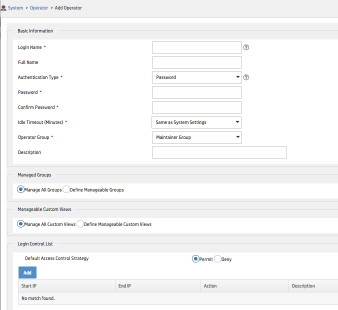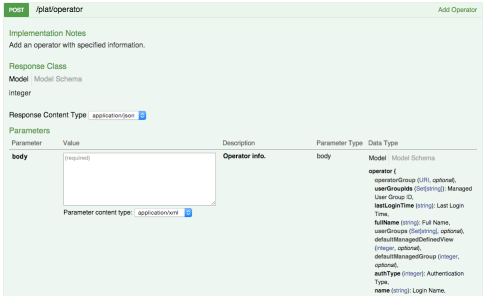It’s a funny world we live in. Unless you’re hiding under a rock, there’s been a substantial push in the industry over the last few years to move away from the CLI. As someone right in the middle of this swirling vortex of inefficiency, I’d like to suggest that it’s not so much the CLI that’s the problem, but the fact that each box is handled on an individual basis and that human beings access the API through a keyboard. Not exactly next-generation technology.
I’ve been spending lot of time learning python and trying to apply it to my daily tasks. I started looking at the HP IMC Network Management station a few months ago. Mainly as a way to start learning about how I can use python to access RESTFul APIs as well as gain some hands on working with JSON and XML. As an observation, it’s interesting to be that I’m using a CLI ( python ) to configure an NMS ( IMC) that I’m using to avoid using the CLI. ( network devices ).
I’ve got a project I’m working on to try and automate a bunch of the initial deployment functions within my NMS. There are a bunch of reasons to do this that are right for the business. Being able to push information gathering onto the customer, being able to use lower-skilled ( and hence lower paid!) resources to do higher level tasks. Being able to be more efficient in your delivery, undercut the competitors on price and over deliver on quality. It’s a really good project to sink my teeth and use some of my growing coding skills to make a difference to the business.
This is the first post in which I’ll discuss and document some of the simple functions I’m developing. I make no claims to be a programmer, or even a coder. But I’m hoping someone can find something here usefull, and possibly get inspired to start sharing whatever small project you’re working on as well.
Without further ado, let’s jump in and look at some code.
What’s an Operator
Not familiar with HP IMC? You should be! It’s chock full of goodness and you can get a 60 day free trial here. In IMC an Operator is someone who has the right to log into the system and perform tasks in the NMS itself. The reason they use the word operator vs. user is that there’s a full integrated BYOD solution available as an add-on module which treats a user as resource, which of course is not the same thing as an administrator on the system.
IMC’s got a full RBAC system as well which allows you to assign different privilege levels to your operators, from view only to root-equiv access, as well as splitting up what devices you can perform actions on, as well as segmenting what actions you’re allowed to perform. Pretty powerful stuff once you understand how the pieces go together.
Adding an Operator in the GUI
This is a screen capture of the dialog used to add an operator into IMC. It’s intuitive. You put the username in the username box, you put the password in the password box. Pretty easy right?
If you know what you’re doing and you’re a reasonably good typist, you can add probably add an operator in a minute or less.

Where do Operators come from?
Don’t worry. This isn’t a birds and bees conversation. One of the biggest mistakes that I see when people start into any network management system project, whether that’s Solarwinds, Cisco Prime, What’s up Gold, HP NNMi, or HP IMC, is that they don’t stop to think about what they want/need to do before they start the project. They typically sit down, start an auto-discovery and then start cleaning up afterwards. Not exactly the best way to ensure success in your project is it?
When I get involved in a deployment project, I try to make sure I do as much of the information gathering up front. This means I have a bunch of excel spreadsheets that I ask them to fill in before I even arrive onsite. This ensures two things:
- I can deliver on what the customer actually wants
- I know when I’m done the project and get to walk away and submit the invoice.
I won’t make any judgement call on which one of those is more important.
My Operator Template
My operator template looks like this
![]()
The values map to the screen shot above exactly as you would expect them to.
Full name is the full name. Name is the login name, password is the password etc…
The authType is a little less intuitive, although it is documented in the API docs. The authType maps to the authentication type above which allows you to choose how this specific operator is going to authenticate, through local auth, LDAP, or RADIUS.
The operator group, which is “1” in my example, maps to the admin operator group which means that I have root-level access on the NMS and can do anything I want. Which is, of course, how it should be, right?
The Problem
So I’ve got a CSV file and I know it takes about one minute to create an operator because I can type and I know the system. Why am I automating this? Well, there are a couple of reasons for that.
- Because I can and I want to gain more python experience
- Because if I have to add ten operators, this just became ten minutes.
- Because I already have the CSV file from the customer. Why would I type all this stuff again?
- Because I can reuse this same format at every customer project I get involved in.
- Because I can blame any typos on the customer
Given time, I could add to this list, but let’s just get to the code.
The Code
Authenticating to the Restful API
Although the auth examples in the eAPI documentation use the standard URLIB HTTP library, I’ve found that the requests library is MUCH more user friendly and easier to work with.
So I first create a couple of global variables called URL and AUTH that I will use to store the credentials.
#url header to preprend on all IMC eAPI calls
url = None
#auth handler for eAPI calls
auth = None
Now we get to the meat. I think this is pretty obvious, but this function gathers the username and password used to access the eAPI and then tests it out to make sure it’s valid. Once it’s verified as working ( The 200 OK check ). The credentials are then stored in the URL and AUTH global variables for use later on. I’m sure someone could argue that I shouldn’t be using global variables here, but it works for me. :) def imc_creds():
''' This function prompts user for IMC server information and credentuials and stores
values in url and auth global variables'''
global url, auth, r
imc_protocol = input("What protocol would you like to use to connect to the IMC server: \n Press 1 for HTTP: \n Press 2 for HTTPS:")
if imc_protocol == "1":
h_url = 'http://'
else:
h_url = 'https://'
imc_server = input("What is the ip address of the IMC server?")
imc_port = input("What is the port number of the IMC server?")
imc_user = input("What is the username of the IMC eAPI user?")
imc_pw = input('''What is the password of the IMC eAPI user?''')
url = h_url+imc_server+":"+imc_port
auth = requests.auth.HTTPDigestAuth(imc_user,imc_pw)
test_url = '/imcrs'
f_url = url+test_url
try:
r = requests.get(f_url, auth=auth, headers=headers)
except requests.exceptions.RequestException as e: #checks for reqeusts exceptions
print ("Error:\n"+str(e))
print ("\n\nThe IMC server address is invalid. Please try again\n\n")
imc_creds()
if r.status_code != 200: #checks for valid IMC credentials
print ("Error: \n You're credentials are invalid. Please try again\n\n")
imc_creds()
else:
print ("You've successfully access the IMC eAPI")Creating the Operators
I used the HP IMC eAPI /plat/operator POST call to as the basis for this call.

After doing a bit of testing, I arrived at a JSON array which would allow me to create an operator using the “Try it now” button in the API docs. ( http://IMC_SERVER:PORTNUMBER/imcrs to access the online docs BTW ).
{
"password": "access4chris",
"fullName": "Christopher Young",
"defaultAcl": "0",
"operatorGroupId": "1",
"name": "cyoung",
"authType": "0",
"sessionTimeout": "10",
"desc": "admin account"
}Using the Try it now button, you can also see the exact URL that is used to call this API.
The 201 response below means that it was successfully executed. ( you might want to read up on HTTP codes as it’s not quite THAT simple, but for our purposes, it will work ).

Now that I’ve got a working JSON array and the URL I need, I’ve got all the pieces I need to put this small function together.
You can see the first thing I do is check to see if the auth and url variables are still set to None. If they are still None I use the IMC_CREDS function from above to gather them and store them.
I create another variables called headers which stores the headers for the HTTP call. By default, the HP IMC eAPI will respond with XML. After working with XML for a few months, I decided that I prefer JSON. It just seems easier for me to work with.
This piece of code takes the CSV file that we created above and decodes the CSV file into a python dictionary using the column headers as the key and any additional rows as the values. This is really cool in that I can have ten rows, 50 rows, or 100 rows and it doesn’t matter. This script will handle any reasonable number you throw at it. ( I’ve tested up to 20 ).
#headers forcing IMC to respond with JSON content. XML content return is the default
headers = {‘Accept’: ‘application/json’, ‘Content-Type’: ‘application/json’,’Accept-encoding’: ‘application/json’}
def create_operator():
if auth == None or url == None: #checks to see if the imc credentials are already available
imc_creds()
create_operator_url = ‘/imcrs/plat/operator’
f_url = url+create_operator_url
with open (‘imc_operator_list.csv’) as csvfile: #opens imc_operator_list.csv file
reader = csv.DictReader(csvfile) #decodes file as csv as a python dictionary
for operator in reader:
payload = json.dumps(operator, indent=4) #loads each row of the CSV as a JSON string
r = requests.post(f_url, data=payload, auth=auth, headers=headers) #creates the URL using the payload variable as the contents
if r.status_code == 409:
print (“Operator Already Exists”)
elif r.status_code == 201:
print (“Operator Successfully Created”)
Now you run this code and you’ve suddenly got all the operators in the CSV file imported into your system.
Doing some non-scientific testing, meaning I counted in Mississippi’s, it took me about 3 seconds to create 10 operators using this method.
Time isn’t Money
Contrary to the old saying, time isn’t actually money. We can always get more money. There’s lots of ways to do that. Time on the other hand can never be regained. It’s a finite resource and I’d like to spend as much of it as I can on things that I enjoy. Creating Operators in an NMS doesn’t qualify.
Now, I hand off a CSV file to the customer, make them fill out all the usernames and passwords and then just run the script. they have all the responsibility for the content and all I have to do is a visual on the CSV file to make sure that they didn’t screw anything up.
Questions or comments or better ways to do this? Feel free to post below. I’m always looking to learn.